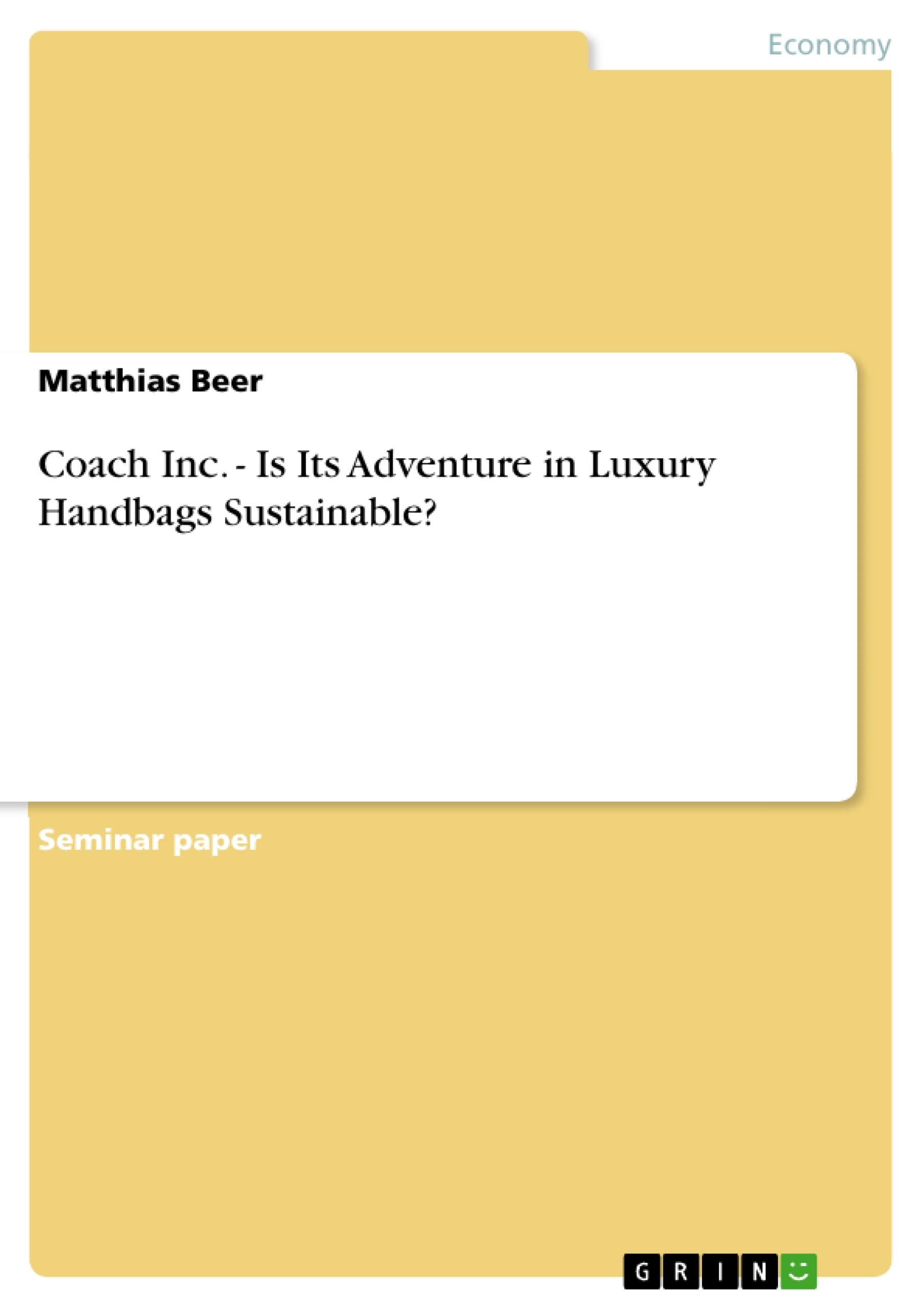Executive Summary:
In 1941 Miles Cahn, a leather artisan, started producing women’s luxury handbags in a loft located in Manhattan, New York, which were simple in style but resilient and suitable for daily use. After 40 years in business the company named Coach was able to grow continuously by setting prices 50 percent lower than the competition and introducing new models every year. Coach estab-lished over the years accounts with retailers such as Bloomingdale’s and Saks Fifth Avenue for instance and achieved extraordinary growth rates. In 1985 the company was acquired by the Sara Lee Corporation and went thru an initial public offering in 2000.
In the luxury goods industry where market characteristic tends to be highly sen-sitive to economic up- and downturns, Coach had the ability to establish and maintain brand loyalty and reputation through various strategies. Coach’s im-mense success has been largely attributable to its focus on quality and stylish products with respect to consumer needs derived from their detailed marketing research. Its “affordable luxury goods” price strategy also assist to drive growth by attracting a wide range of consumers, while at the same time, correspond to changes in middle-income consumer behavior and lifestyle.
The Coach Inc. case study analysis the success of Coach and the luxury good industry in general. Further the external environment and internal circumstances as well as the competitive situation of Coach are discussed. The assignment concludes with recommendations for further success of the company and the ITM checklist.
Table of Contents
- Executive Summary
- List of Abbreviations
- List of Figures
- 1. History of Coach Inc.
- 2. Luxury Good Industry
- 2.1. Characteristics
- 2.2. Competition
- 2.3. Luxury Handbags and Leather Accessories Market and Key Success Factors
- 3. Coach Inc.'s Competing Strategy
- 4. Coach Inc. SWOT-Analysis
- 5. Recommendation
- ITM Checklist
- References
Objectives and Key Themes
This case study analyzes the success of Coach Inc. within the luxury goods industry. It examines the external environment, internal circumstances, and competitive landscape of the company. The study aims to understand the factors contributing to Coach's success and provide recommendations for its continued growth.
- The history and evolution of Coach Inc.
- The characteristics and competitive dynamics of the luxury goods industry
- Coach Inc.'s strategic approach and key success factors
- An analysis of Coach Inc.'s strengths, weaknesses, opportunities, and threats (SWOT analysis)
- Recommendations for the company's future success.
Chapter Summaries
The first chapter provides a historical overview of Coach Inc., tracing its origins from a leather artisan's workshop to its growth into a global luxury brand. It highlights Coach's key milestones, including its focus on quality, affordable luxury, and continuous innovation. The second chapter explores the luxury goods industry, examining its characteristics, competitive landscape, and key success factors. It discusses the market dynamics and challenges faced by luxury brands, particularly in relation to economic fluctuations. The third chapter delves into Coach Inc.'s competing strategy, analyzing its core competencies, value proposition, and target market. It discusses how Coach effectively leveraged its brand identity, pricing strategy, and distribution channels to achieve success. The fourth chapter presents a comprehensive SWOT analysis of Coach Inc., identifying its strengths, weaknesses, opportunities, and threats. This analysis provides insights into the company's competitive position and potential growth areas. The fifth chapter presents recommendations for Coach Inc.'s future success based on the insights derived from the previous chapters.
Keywords
The main keywords and focus topics of this case study include luxury goods industry, brand loyalty, brand reputation, affordable luxury, product quality, market research, competitive advantage, SWOT analysis, and strategic recommendations. These keywords encapsulate the primary themes and concepts explored in the study, providing a concise overview of its scope and focus.
- Citar trabajo
- Dipl. Ing. MBA Matthias Beer (Autor), 2011, Coach Inc. - Is Its Adventure in Luxury Handbags Sustainable?, Múnich, GRIN Verlag, https://www.grin.com/document/233265



